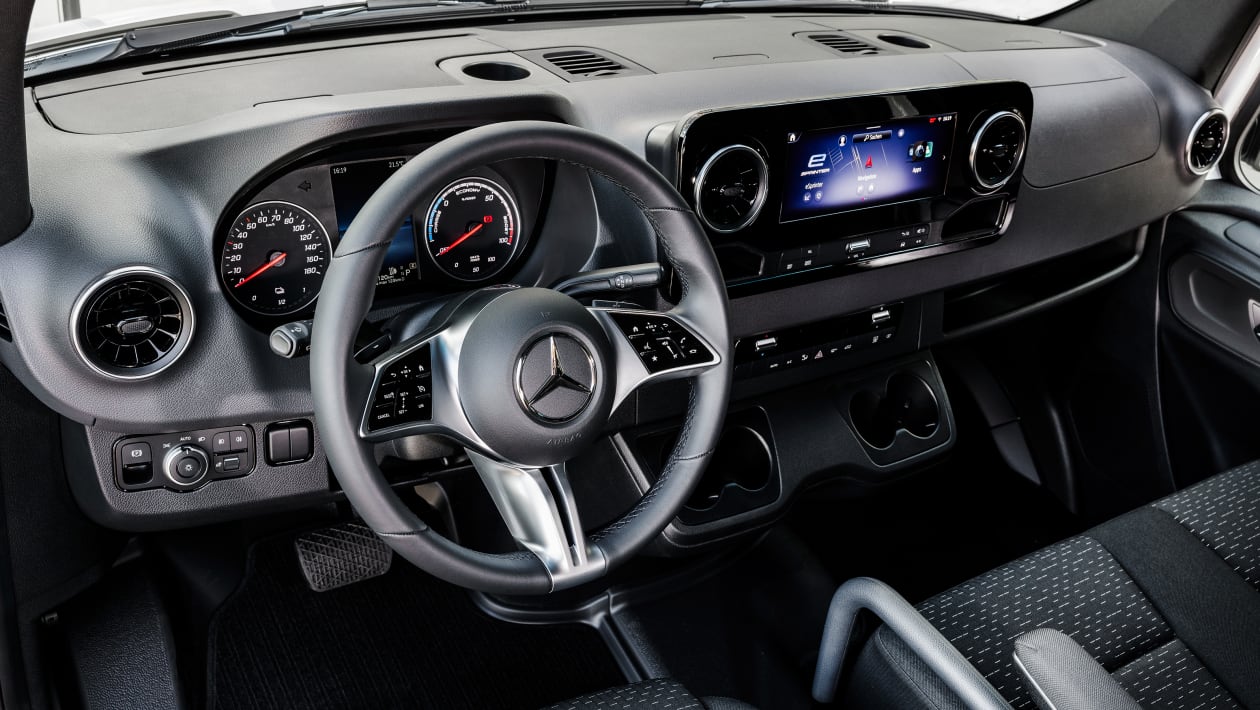Mercedes-Benz has made its eSprinter panel van massively more competitive with the second-generation model boasting a 161 per cent increase in range.
The Mercedes-Benz eSprinter electric van had a 153km range when it launched in 2020 but now a new version has more than doubled that distance to 400km. The new eSprinter can be seen as a response to Ford’s e-Transit, which put rival large panel vans in the shade with a 315km range when it launched in 2022.
Now, there’s a new king of the long-range electric panel van hill but the eSprinter achieves its impressive figures thanks to a huge 113kWh battery, and that is likely to have an impact on prices. As well as that top spec configuration, which Mercedes claims can actually cover 500km in city driving, there are also 56kWh and 81kWh battery options for buyers to consider.
Australian prices will be announced towards the eSprinter’s expected launch here near 2024. The first eSprinters in the country are likely to be the long-range 113kWh battery variants in the L3 bodystyle.
The new Mercedes eSprinter can charge at speeds of up to 115kW. That’s fast compared to most of the electric panel vans on the market right now and on a level with the Ford e-Transit. It means a wait of 28 minutes to boost a model with the smallest 56kWh battery from 10 to 80 per cent while the big 113kWh battery versions would take 42 minutes. There’s also the option to charge at up to 11kW from a standard wallbox charger.
In terms of power, the eSprinter’s motor can be specified to either pump out 100kW or 150kW with all versions generating up to 400Nm of torque. Drive is sent to the rear-wheels, unlike in the old front-wheel drive model, and that brings benefits in terms of load carrying as well as the different conversions and bodystyles Mercedes can offer. With L2 and L3 panel van lengths set to be available, the eSprinter has a maximum gross vehicle weight of 4250kg and can pull a 2000kg trailer.
The big story might be what’s under the skin of the eSprinter but this new version has had a series of other updates as well. The revised cabin now incorporates the MBUX infotainment technology complete with vice control, navigation and the Electric Intelligence software – this can help calculate the optimum charging strategy to get the van to its destination with the desired amount of battery charge remaining.
The eSprinter will take over from the old model at the top of Mercedes’ electric commercial vehicle range. It will sit above the existing eVito mid-size panel van and the eCitan compact van. Beyond that, Mercedes is already developing its new VAN.EA architecture that will underpin a new generation of electric vans from 2025 onwards.







